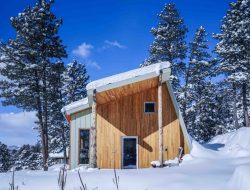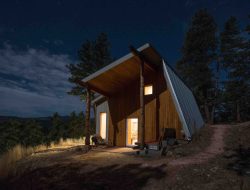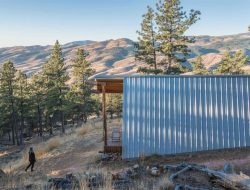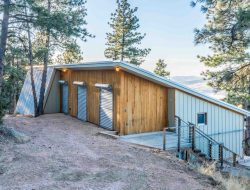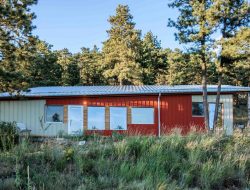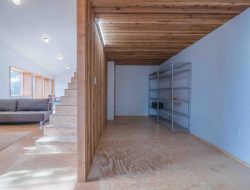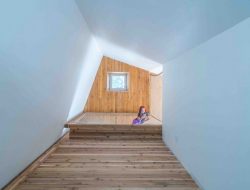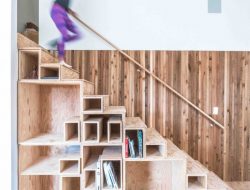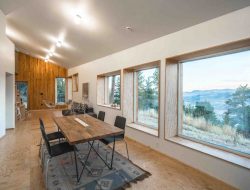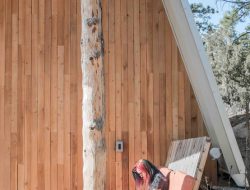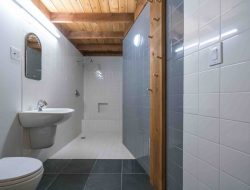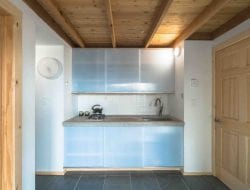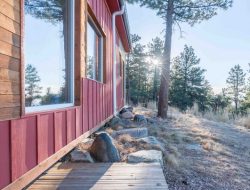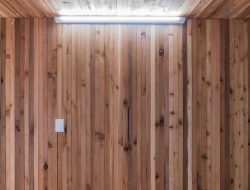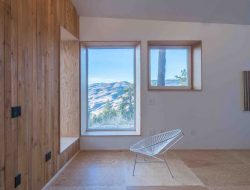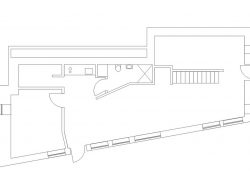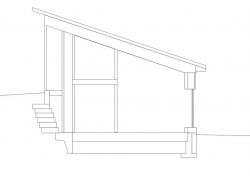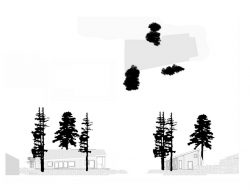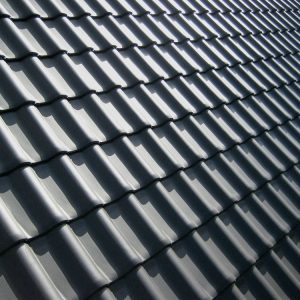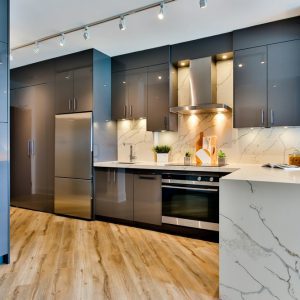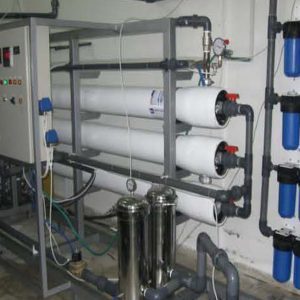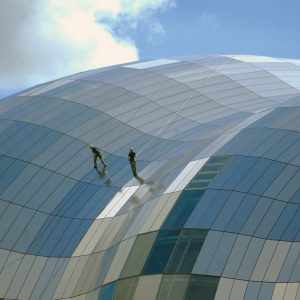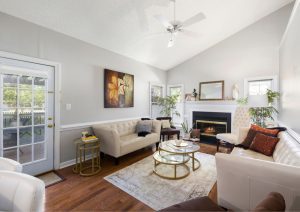Contents
Masonville, United States – Baosol
Built area: 130.0 m2
Year built: 2016
Photographs: Andrew Michler
MARTaK Passive House is found at the foot of the Rocky Mountains, located off-grid. It is well integrated into the surrounding landscape – a pristine forest that called for organic building.
The home is wedge-shaped, surrounded by trees that shield the house from the hot summer sun. Mountain ranges create a wonderful backdrop on the eastern and northern sides.
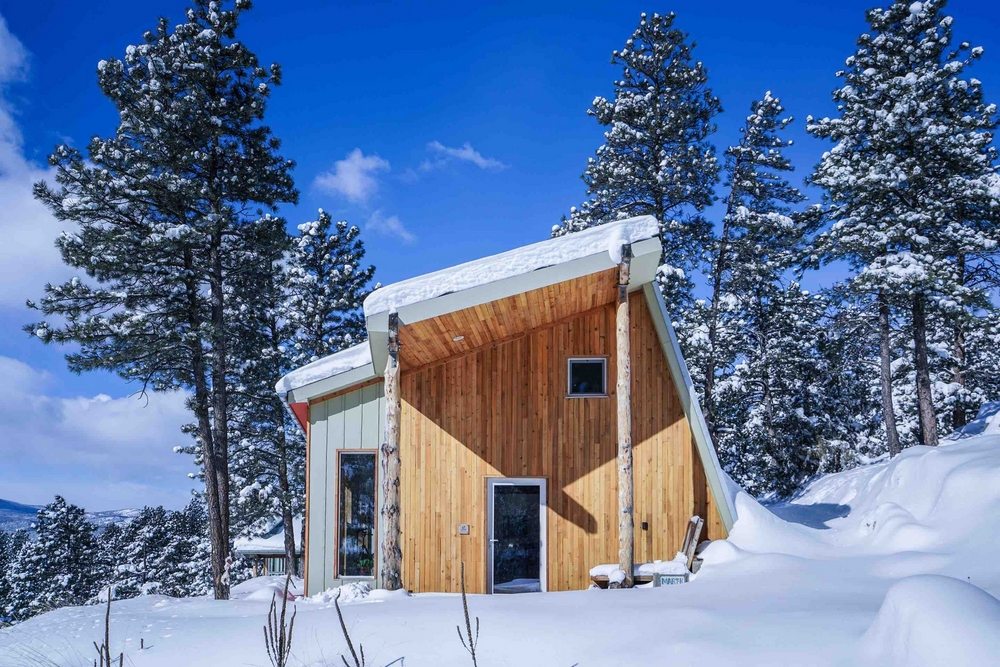
The interiors feature an open-plan layout, maximizing every available space. It features a work space, living room, large bedroom, a small kitchen, and a sunken shower. Another small bedroom and a storage area are located at the upper portion of the house.
White walls paired with natural timber finishes make the house comfortable and warm. Large windows offer stunning views of the surrounding landscape.
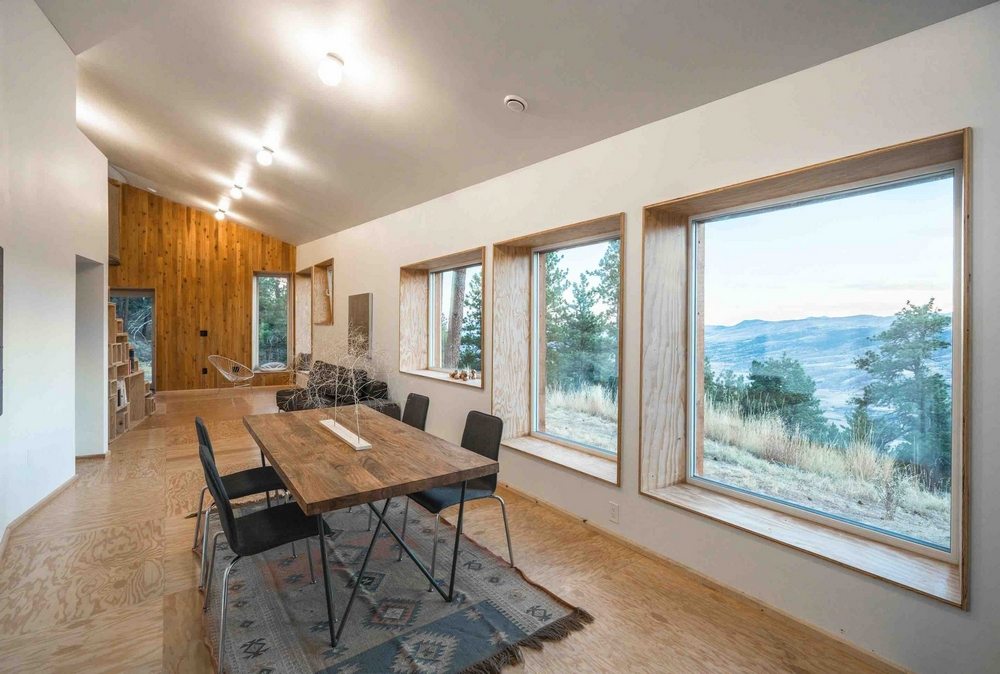
The home is designed to age in place, with plenty of stunning views and natural light. It was built using ceramic tile, slate, gypsum, cedar pickets, and plywood. MARTaK Passive House is inspired by Japanese contemporary homes.
Notes from the Architect:
Any building intervention on a green site requires a degradation of that site’s original natural condition which is in tension with our fundamental need for quality low impact shelter. Environmental design can be seen as an exercise in exploring the aesthetic human experience, to immerse oneself in nature, while minimally disturbing it and the environment more generally.
MARTaK is the first international certified Passive House in Colorado, and being built off-grid and without foam investigates how architecture and environmental ambition can work in concert. The massing is inspired by the local mountains called hogbacks but also evokes a traditional cabin, and is realized by inserting the footprint between mature ponderosa pine trees. Since the Passive House Planning Package energy modeling encourages simpler shapes for efficiency to provide a unique experience the home’s angled south face and asymmetrical interiors reduces complexity while cultivating curiosity. Completed in mid-2016 the home has already been featured on the cover of two prestigious magazines.
With 1275 square feet of treated floor area the design draws from contemporary small residential Japanese architecture utilizing an open floor plan and restrained materials palette. Along with the copious use of FSC plywood and lumber is a nail-lam wall and floor, cedar pickets, and ceramic and slate tile. A staircase made from simple boxes anchors the elongated living space while providing useful storage. The small loft features a net bed which gives kids a place to nest while providing daylight and an acoustic and visual connection with the main floor. Wide window ledges provide small break out spaces for a more intimate experience. Age in place capacity is encouraged with a sunken shower, simplified floor plan, and a graded ramp on the exterior.
The driving vision for the material selection is a building which can be reabsorbed by the forest after the steel roof and windows are recycled. Foam free construction techniques also critically lowers the total embodied energy and reduces long term toxicity. The cellulose insulation cavities encased with mineral wool board to the exterior both improves the wall vapor profile. Sub-grade foam is eliminated utilizing a heavily insulated crawlspace floor which also markedly reduces concrete. Reuse of material includes the incorporation of an earth packed tire foundation and nail-lam exterior decking made from deconstructed redwood decks.
Along with the mineral wool board a metal roof, cement board siding and triple pane windows provides a hardened building for wildfire events which are occurring with more frequency in the region. Extensive rain catchment supplements water needs and acts as reservoir for fire suppression.
At peak the home requires the equivalent of a stove top burner for heating which is reserved for only the coldest of days with little sun, making heating costs difficult to quantify. The fresh air system comprises of a high efficiency Heat Recovery Ventilator supplemented with an earth tube for summer cooling. The Passive House modeling show the project to perform at more than twice the certification level and experience has proven the standard to be comfortably reliable in reducing energy use to a bare minimum while improving occupant well being and comfort.
Click on any image to start lightbox display. Use your Esc key to close the lightbox. You can also view the images as a slideshow if you prefer. ?
Exterior Views:
Interior Views:
Drawing Views:
For more houses with sustainable designs, check out Tilt Roof House…

